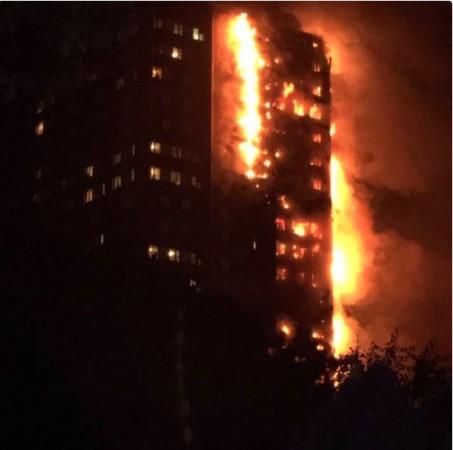At least 12 people have been confirmed dead while another 74 were left injured after a major fire broke out on Wednesday, June 14, at Grenfell Tower, a residential high-rise building, in London. The 27-storey tower continued to burn until late afternoon despite deployment of about 250 firemen and 40 fire engines to control the blaze.
The massive fire left 125 families, who lived in the building, homeless. "They've lost everything that they've got, standing there homeless and penniless," local councillor Robert Atkinson told CNN, adding that it would be a "major responsibility" for the government to help house them.
London fire: 6 dead, at least 74 injured in Grenfell Tower blaze [VIDEO]
As harrowing tales of survivors and eye witnesses come out, major questions like what was the cause of the fire and why it spread rapidly still remain unanswered.
Why did the fire start?
While the fire is believed to have started on the fourth floor, but the cause remains unknown.
Some survivors were reported as saying that official apathy led to the devastating incident. They are said to have repeatedly raised fire safety concerns. Amid the issues raised were the building's inadequate escape routes, and the fact that there was no integrated alarm system, the Washington Post reported. Also, the building underwent a Rs 70 crore refurbishment in May 2016, when Rydon company delivered several perceived improvements to community facilities and energy efficiency of the building. However, many now say that the renovation had perhaps left the building clad in panels that were new but not up to the safety standards.
According to fire safety experts, the cladding on the building is a possible reason the blaze spread so quickly externally. The cladding of the Grenfell Tower, which was built in 1974 by Kensington and Chelsea Borough Council, had a metal outer coating and an expanded foam interior.

The concrete walls of the tower were lined with flammable aluminium composite that have a polyethylene or plastic core and an aluminium coating, Guardian reported. This is the same material that was used to clad the Lacrosse building in Melbourne's Docklands, which caught fire on November 25 2014. The Lacrose building was engulfed in a massive blaze in a matter of 11 minutes.
Fire safety expert Elvin Edwards was quoted by the BBC as saying that the London fire spread rapidly as a result of the "chimney effect", and that the wind would have fanned the flames.
The fire department is also looking into why the tower was not equipped with fire alarms and sprinklers.
Here's a video of the Lonton Tower fire:














